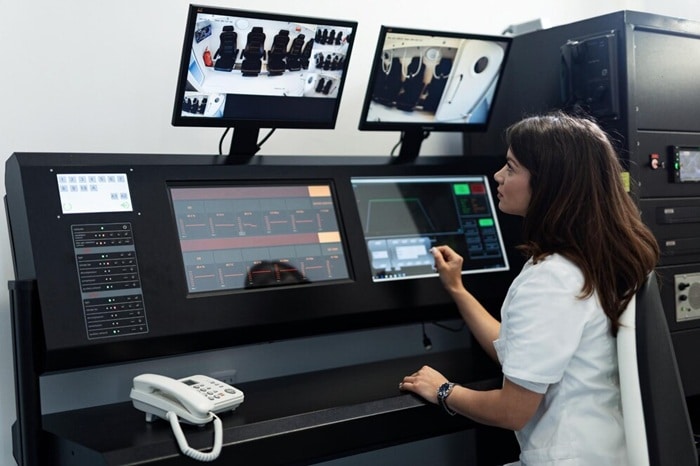
The global rise of threats, from terrorism to smuggling and cyberattacks, has necessitated a reevaluation of existing safety protocols. In this landscape, the integration of advanced technology, particularly security scanner machines, stands as a pivotal element in enhancing safety measures. These machines play a crucial role in detecting potential threats before they escalate into serious incidents.
Advancements in Security Scanner Technology
Over the years, security scanner technology has evolved tremendously. Traditional metal detectors have given way to sophisticated imaging systems that can identify a wide range of threats, including non-metallic weapons and explosives. A modern security scanner machine utilizes advanced imaging techniques such as millimeter wave scanning and computed tomography (CT). These technologies allow for the creation of detailed 3D images of the items being scanned, providing security personnel with greater clarity and precision in their assessments.
Moreover, the incorporation of artificial intelligence (AI) and machine learning into these systems has revolutionized threat detection. AI algorithms can analyze images in real time, significantly reducing false positives and minimizing the need for manual checks. This not only streamlines the security process but also allows for quicker responses to potential threats, thus enhancing overall safety measures in high-risk environments.
Integration of Biometric Scanning
In addition to traditional scanning methods, the future of security protocols is likely to see an increased integration of biometric scanning techniques. Biometric systems, which can identify individuals based on unique physical characteristics such as fingerprints, facial recognition, or iris scans, enhance the effectiveness of security measures. By combining biometric data with the capabilities of security scanner machines, security personnel can verify identities with a high degree of accuracy, minimizing the risk of unauthorized access to sensitive areas.
For instance, in airports, implementing a system where passengers undergo both biometric screening and baggage scanning can significantly enhance security. This dual-layer approach not only streamlines the boarding process but also ensures that only verified individuals are allowed to board flights, reducing the risk of sabotage or other malicious acts.
The Role of Data Analytics in Security
Data analytics is another critical component in the evolution of security protocols. The integration of big data allows security agencies to analyze patterns and predict potential threats based on historical data. Security scanner machines can contribute to this data pool by providing insights on frequent types of threats detected in specific locations or during certain events.
By employing predictive analytics, security teams can allocate resources more effectively, focusing on high-risk areas and optimizing personnel deployment. Additionally, real-time data analysis can enable rapid response teams to address threats as they arise, enhancing the overall safety of high-risk environments.
Challenges in Implementation
Despite the promising advancements in security scanner technology, there are several challenges that must be addressed to fully realize their potential. Privacy concerns are paramount; the use of advanced imaging systems and biometric data raises questions about the balance between safety and individual rights. Security agencies must establish transparent policies to ensure that personal information is handled responsibly and ethically.
Moreover, the financial implications of upgrading existing systems can be significant. High-quality security scanner machines and the infrastructure required to support them often come with substantial costs. Governments and organizations must weigh these costs against the potential benefits of increased safety and mitigation of risks.
Training and Human Element
Another critical aspect of enhancing safety protocols involves the human element. Security scanner machines, while sophisticated, still rely on trained personnel to interpret results and make decisions based on that information. Adequate training is essential to ensure that security staff can effectively operate new technologies and respond to potential threats.
Furthermore, fostering a culture of security awareness among all personnel is crucial. Regular drills and simulations can help prepare teams for real-life scenarios, ensuring they are ready to react swiftly and effectively in high-stress situations. This combination of advanced technology and human expertise is vital for maximizing the effectiveness of security measures.
Future Directions and Innovations
Looking ahead, the future of security protocols in high-risk environments will likely be shaped by continuous technological innovations. The potential for further integration of AI, machine learning, and data analytics will enhance the capabilities of security scanner machines. Additionally, the development of more portable and user-friendly scanning devices may allow for security measures to be implemented in a wider range of settings, from large public venues to smaller, localized areas.
Furthermore, the rise of the Internet of Things (IoT) may lead to interconnected security systems that provide holistic surveillance capabilities. Imagine a scenario where security scanner machines communicate with other devices, such as surveillance cameras and access control systems, creating a comprehensive security network that can identify and respond to threats in real time.
In conclusion, enhancing safety protocols through the use of advanced security scanner machines represents a pivotal step in safeguarding high-risk environments. As technology continues to advance, the integration of innovative scanning techniques, biometric identification, data analytics, and human expertise will create a more secure world. The focus must remain on balancing safety with ethical considerations, ensuring that as we evolve our security measures, we also uphold the values of privacy and individual rights. Ultimately, the future of security is not just about technology; it is about creating a safer society for everyone.




